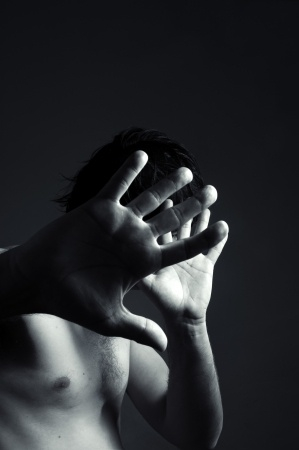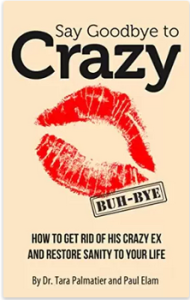 October is domestic violence awareness month. In an effort to raise awareness, I’d like to shine a spotlight on a group of individuals who comprise approximately half the victims of domestic violence. A group who is afforded very few resources and are typically ignored and/or ridiculed when they speak out about their victimization — often by the very individuals seeking to raise public awareness about the insidious social malady of domestic violence.
October is domestic violence awareness month. In an effort to raise awareness, I’d like to shine a spotlight on a group of individuals who comprise approximately half the victims of domestic violence. A group who is afforded very few resources and are typically ignored and/or ridiculed when they speak out about their victimization — often by the very individuals seeking to raise public awareness about the insidious social malady of domestic violence.
Who is this invisible and marginalized group of domestic violence victims pushed to the periphery of public awareness?
Men.
[*If you are already aware about the difficulties male victims of domestic violence face, please scroll to the end of this article to find out how you can help.]
Men are turned away from most domestic violence shelters. Men do not meet eligibility to receive aid from most domestic violence support organizations by virtue of being men, which is nothing short of overt discrimination, sexism and bigotry.
To the best of our knowledge, there are no court advocacy programs for male victims of domestic violence. Men (and their children) are not eligible for state and federal stipends for safe housing from their female abusers. There are no free or subsidized counseling programs nor are there free legal services/legal aid for male victims of domestic violence.
In the United States, there is only one shelter for male victims of domestic violence (the Valley Oasis Shelter in Antelope, CA) out of the approximately 1,800 shelters available to women and their children nationwide. Canada also used to have a domestic violence shelter for men that was run by the late Earl Silverman.
Mr. Silverman committed suicide this past spring after succumbing to a state of learned helplessness and hopelessness after years of begging for funding and assistance for his much needed shelter. Essentially, Canadian women’s domestic violence organizations locked arms and blocked Mr. Silverman from the funding trough. The same thing happens to organizations like DAHMW (Domestic Abuse Hotline for Men and Women)in the United States.
The repeated message to organizations that want to help male domestic violence victims seems to be, “Be grateful for the few scraps of government funding that drop from the table and if you complain about the disparity, you won’t even get that.” The reality is that most governments are willfully blind to and/or profit from the suffering and victimization of their male citizens. Since men are currently the most under-served group of domestic violence victims, one would think funding the few organizations that help this population would receive priority from state and federal programs. Instead, male abuse victims are begrudgingly acknowledged, that is if they are acknowledged at all.
According to RADAR (Respecting Accuracy in Domestic Abuse Reporting), less than 10% of the United States OVW’s (Office of Violence Against Women) funding is used to help male victims. A big part of the problem lies in the very names of the OVW and the VAWA (Violence Against Women Act). “Violence against women” is exclusionary and ignores half of all domestic violence victims. Even worse, it demonizes men as perpetrators and women as victims in the majority of domestic violence cases, which simply is not true.
It also doesn’t help that the U.S. Department of Justice refuses to fund research about male victims of domestic violence. On page 6 of the DOJ’s solicitation for proposals on intimate partner violence and stalking, they have a section that explicitly states what kind of projects they will not fund, including:
Proposals for research on intimate partner violence against, or stalking of, males of any age.
It is hard to imagine in this day and age that any victim of domestic violence is ignored, scoffed at or denied support, but this is precisely what we do to male victims. It will come as no surprise to many of you reading this that men are approximately 40% to 50% of domestic violence victims. Sadly, most people are still woefully ignorant about domestic violence in large part due to persistently dishonest and misleading public awareness campaigns, data gathered via unscientific methodology and woozles like the 1 in 4 woozle about rape on college campuses.
Despite the abundance of peer-reviewed research on male domestic violence victims and female perpetrators, most domestic violence awareness campaigns focus exclusively on female victims as if our society isn’t already well aware that women can be victims of domestic violence. Many domestic violence organizations persist in publishing long ago debunked statistics that portray women as the victim and men as the primary aggressors in the majority of domestic violence cases.
Raising Public Awareness about Male Victims of Domestic Violence
In His Own Words
In an effort to bring attention to the pandemic of male domestic violence victims and female abusers, I’ll publish an In His Own Words post on Shrink4Men everyday in October. These posts will be from men who are or have been victims of domestic violence.
Heterosexual men aren’t the only invisible domestic violence victims. The two other populations that are also egregiously ignored are individuals in same sex relationships and the transgendered. We welcome your stories, too.
If you would like to share your story about domestic violence, please send it to shrink4men@gmail.com. I’m looking for written narratives and/or audio or video recordings that describe or illustrate the abuse you have suffered. If you have an audio or video file of your wife, girlfriend, ex, etc., in the midst of an abusive episode, we will publish those as well.
Please adhere to the following guidelines:
- Limit written testaments to no more than 2000 words and send as a Microsoft Word Document.
- Use paragraph breaks, spellcheck, etc.
- Please send video/audio recordings in a format that can be readily uploaded to YouTube.
- If you send and audio/video recording, also provide a written description of the file (i.e., the circumstances leading up to the abuse episode).
- Edit out identifying information before sending Word, video or audio files.
- If your abuse case is already a matter of public record (e.g., in a newspaper or online publication), you may use identifying information.
- Use DV AWARENESS SUBMISSION in the subject header of your email.
Due to time constraints, we may not be able to use submissions that require a great deal of editing, so please try to have your materials in the best shape possible before sending.
Additionally, please consider including some of the following in your submissions:
- Who is or was your abuser? Wife, girlfriend, fiancée, ex, grandmother, mother, sister, grandmother, aunt, etc?
- How long did the abuse go on?
- What kind of abuse? Emotional, physical, parental alienation, financial, smear campaigns, stalking, false allegations of abuse, sexual, falsely obtained restraining order and other abuse via the courts and law enforcement, etc?
- When did you realize what you were experiencing was abuse?
- Did you have difficulty believing you were being abused? If so, why?
- Did you tell anyone you were being abused? Friends, family, therapist, clergy, police? What was their reaction?
- If you were physically abused and called the police, what happened? If you did not call the police, why didn’t you?
- What is your message to other men and boys who are being abused?
 Counseling with Dr. Tara J. Palmatier, PsyD
Counseling with Dr. Tara J. Palmatier, PsyD
Dr. Tara J. Palmatier, PsyD helps individuals work through their relationship and codependency issues via telephone or Skype. She specializes in helping men and women trying to break free of an abusive relationship, cope with the stress of an abusive relationship or heal from an abusive relationship. Coaching individuals through high-conflict divorce and custody cases is also an area of expertise. She combines practical advice, emotional support and goal-oriented outcomes. Please visit the Schedule a Session page for more information.
 Want to Say Goodbye to Crazy? Buy it HERE.
Want to Say Goodbye to Crazy? Buy it HERE.